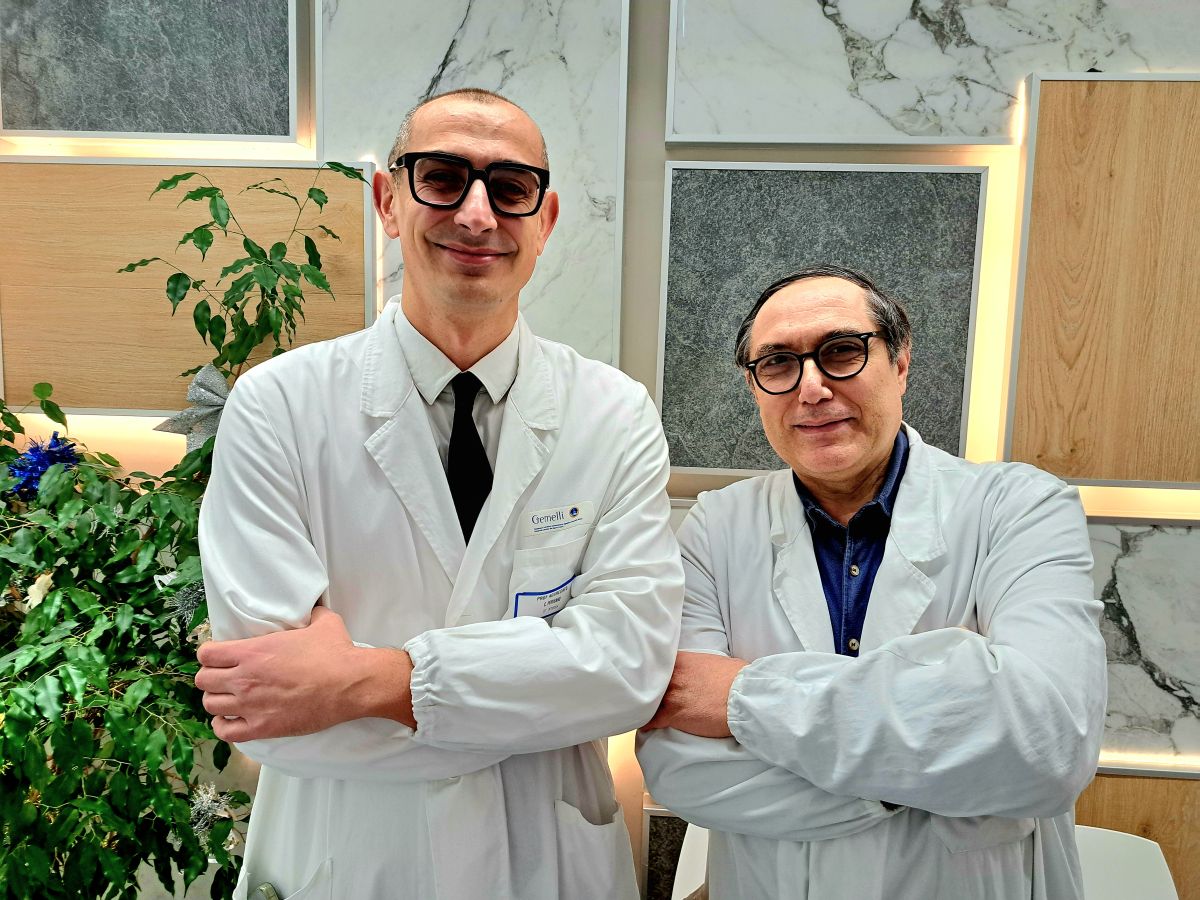ROME (ITALPRESS) – Mr. Mario is 80 years old and, after working all his life as a direct farmer, he still continues to tend his vegetable garden in a countryside in the province of Viterbo despite his years and aches and pains. But Mario has his own complex and articulated medical history, which began 10 years ago when, due to increasingly severe and persistent pain in his right leg he made an orthopedic examination. After a series of examinations, the specialist consulted informed Mario that those discomforts were caused by a rare bone tumor (an adamantinoma) in the tibia. The patient was therefore treated with a resection of the tumor with implantation of proximal tibia mega-prosthesis (i.e., in the area near the knee). But the problems were not over. About a year after the surgery, a severe infection of the implanted prosthesis appeared, leading Mario to a series of complex surgeries, which resulted in the implantation of a titanium total leg and ankle prosthesis, coated in silver to protect him from infection. Six years later, Mario returns to Gemelli orthopedists for the onset of ankle pain. Tests performed reveal that a screw in the prosthesis has broken at the level of the ankle. It is therefore necessary to replace this piece, but the only way to do so is by having a custom-made (‘custom-made’) prosthesis made. Gemini’s orthopedists send Mario’s CT scan to Implantcast, a specialized company in Buxtehude, a small town southwest of Hamburg. Based on the 3-D reconstruction of Mario’s ‘bionic’ ankle, bioengineers make a custom-made prosthesis ‘calculus’ with a 3-D printer, on which the titanium prosthesis is then made for the final implant. Everything is ready for the surgery at Gemelli, which is being performed by Professor Carlo Perisano, an aggregate professor at the Catholic University of the Sacred Heart and medical director at the UOC of Orthopaedics and Traumatology at FPG, directed by Professor Giulio Maccauro. This is a unique surgery, an example of how precision and personalized medicine has now become part of surgical interventions as well. That it is bearing fruit. Just days after the surgery, Mario is standing again on his ‘bionic’ leg enriched with this latest technological jewel. “The patient had undergone several surgeries over the years to treat a bone tumor of the tibia and subsequent complications that had also compromised the knee and ankle joints,” Professor Perisano explains. In 2019, he underwent placement of custom-made custom mega-prosthesis of the total tibia knee and ankle, thus averting the risk of demolitive surgery, i.e., amputation of the limb, ensuring the patient’s return to normal daily activities. “Custom-made (or ‘custom-mad’) prostheses,” Professor Perisano explains, “represent a significant innovation in orthopedics. However, they are expensive implants, precisely because they are made ‘to measure,’ which are therefore reserved for special and selected cases. The use of such prostheses allows us to customize the surgery to the specific needs of the patient, ensuring accurate anatomical reproduction and a high degree of functional recovery. In this specific case, the fabrication of a custom astragalic component allowed us to revise the existing ankle prosthesis and allowed the patient an early return to a normal functional level.” Revision with a custom-made ankle prosthesis of a total ankle and tibia is a procedure that has never before been described in the literature. “The goal of these highly specialized surgeries,” comments Professor Perisano, “is to minimize complications, avert the need for demolitive surgery, and allow the patient to continue his or her normal daily life. Personalized prostheses are custom-designed for the individual patient, taking into account the unique anatomical features and type of treatment. In Mr. Mario’s specific case, we had a custom prosthesis made for his ankle, a joint for which the use of custom prostheses is much less frequent than for joints such as hip, knee and shoulder and not without technical and anatomical difficulties. “In the months prior to surgery, a surgical planning protocol and a prototype of the astragalic and tibial component were developed, which included detailed indications regarding bone resection cuts, component size and all intra-operative steps. Subsequently, after careful evaluation of the design and further modifications, the final prosthetic component was fabricated. “These are extremely precise surgeries,” comments Professor Giulio Maccauro, Full Professor of Orthopaedics at the Catholic University of the Sacred Heart. Thanks to careful pre-operative planning and the dedicated and extremely sophisticated instrumentation required for the fabrication of these special prostheses (cutting masks, guides for positioning the prosthetic components and the custom made prosthesis itself) we are able to perform very precise interventions, which reduce intraoperative errors and guide the operator in decision-making and the surgical act that were unthinkable in the past.”
photo: press office Policlinico Gemelli
(ITALPRESS).

